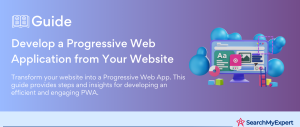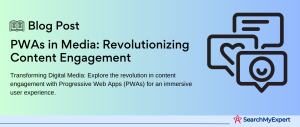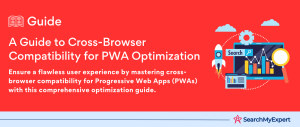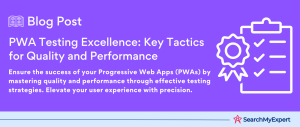Progressive Web App Installation and Lifecycle: Revolutionizing User Experience
Progressive Web Apps (PWAs) have emerged as a game-changer in the digital landscape. These aren’t your ordinary applications; they’re a hybrid, blending the best of web and mobile apps. Imagine accessing an app without the hassle of downloading it from an app store. That’s PWA for you – a revolution!
Core Features of PWAs
- Offline Access: Say goodbye to connectivity woes! PWAs work flawlessly, even without an internet connection.
- Push Notifications: Keep users engaged with timely updates, just like a native app.
- Home Screen Installation:
Users can add PWAs directly to their home screens, ensuring easy access.
Benefits for Users and Developers
- Enhanced User Experience:
PWAs load faster and offer a smoother, app-like experience. - Increased Engagement: Features like push notifications drive user engagement significantly.
- Cost-Effective: Developers rejoice! Building a PWA is more budget-friendly compared to native apps.
PWA Installation and Lifecycle: The Heart of the Matter
The installation and lifecycle of a PWA are pivotal. They ensure that users enjoy a seamless, native-like experience. This process is not just about adding an icon to the home screen; it’s about maintaining the app’s performance, updating content, and managing resources efficiently. Understanding this lifecycle is crucial for both developers and users, as it guarantees an optimal, uninterrupted experience.
PWA Installation Basics
Progressive Web Apps (PWAs) offer a unique installation process that sets them apart from traditional mobile apps. The simplicity and flexibility of installing PWAs enhance user accessibility and convenience.
Ways to Install a PWA
- Browser’s Install Prompt: An intuitive, straightforward method. When visiting a PWA site, users are prompted to install the app directly from their browser.
- Add to Home Screen:
This option allows users to add the PWA to their home screen, offering easy and quick access. - QR Code Scanning: Modern and user-friendly, scanning a QR code can direct users to the PWA, enabling immediate installation.
Role of Service Workers
- Enabling Offline Functionality: Service workers are the backbone of PWAs, empowering them to operate offline. They cache essential resources, ensuring the app runs smoothly without an internet connection.
- Handling Background Tasks: During installation, service workers manage background tasks, updating content and maintaining app performance.
Installation Differences Across Platforms and Browsers
- Platform Variations: Each platform (Android, iOS, Windows) handles PWA installation slightly differently, impacting how the app integrates with the system.
- Browser Differences:
Different browsers may offer varied experiences in installing PWAs. The process is generally seamless but can vary in presentation and prompt timing.
Understanding these installation basics is crucial for both users and developers, as it enables a seamless integration of PWAs into everyday digital routines.
The PWA Installation Process
Embarking on a technical voyage, let’s unravel the intricate details of the PWA installation process. This journey is not just about clicking ‘Install’. It’s a sophisticated symphony of steps ensuring that your Progressive Web App is not just installed but is primed for peak performance.
Registration: Enlisting the Service Worker
- Initiation:
The process begins with the registration of the service worker, a critical step in the PWA journey. - Browser Bonding: This step binds the service worker to a specific browser, establishing a crucial link for the PWA’s operation.
Fetching Resources: Gathering the Digital Building Blocks
- Asset Assembly:
This phase involves downloading essential app assets – HTML, CSS, and JavaScript files. - Resource Roundup: The PWA fetches all necessary components, ensuring the app’s core structure is ready for action.
Caching: The Cornerstone of Offline Functionality
- Local Storage: App assets are stored locally on the user’s device.
- Offline Readiness: This crucial step guarantees that the PWA remains functional even when internet connectivity falters.
Activation: Awakening the Service Worker
- Operational Onset:
The service worker transitions from dormant to active. - Task Handling:
Now ready, it starts managing background tasks, pivotal for app performance.
Displaying the App: The Grand Unveiling
- Launch Time: The PWA springs to life, presenting itself to the user.
- User Interface Emergence:
What was once a concept, now a tangible, interactive digital experience.
Each step in this process is a testament to the sophistication and user-centric design of PWAs, crafting a seamless blend of web and app worlds.
PWA Lifecycle Events
The lifecycle of a Progressive Web App (PWA) is a dynamic journey, marked by distinct events. Each of these stages plays a crucial role in the app’s functionality and user experience. Let’s delve into these pivotal events and understand how developers harness them to elevate PWAs.
Key Lifecycle Events
Install: The First Encounter
- Timing: Occurs when the PWA is installed.
- Purpose:
Prepares the app for use, setting up caches and downloading necessary assets.
Activate: The Awakening
- When?:
Triggered when the service worker becomes active. - Role: Manages old caches and gets ready to handle app requests.
Fetch: The Resource Quest
- Scenario: This occurs when the PWA fetches network resources.
- Impact:
Central to providing offline access and efficient data usage.
Push: The Notification Knock
- Instance: When a push notification arrives from the server.
- Function:
Engages users with timely updates and interactive content.
Update: The Evolution Phase
- Moment: Triggered when a new version of the PWA is available.
- Significance: Ensures the app stays current with fresh content and features.
Leveraging Lifecycle Events for Functionalities
- Offline Access: Utilize ‘install’ and ‘fetch’ events to cache essential assets, enabling the app to run without an internet connection.
- Background Syncing: Employ ‘activate’ and ‘fetch’ events to sync data in the background, ensuring up-to-date content.
- Push Notifications: Use the ‘push’ event to deliver notifications, keeping users engaged and informed.
Understanding and effectively utilizing these events allows developers to craft robust, responsive, and user-friendly PWAs, bridging the gap between web and app experiences.
Best Practices for PWA Installation
To maximize the potential of Progressive Web Apps (PWAs), certain best practices are crucial. These guidelines ensure an optimized installation experience, enhancing user engagement and app performance.
Optimizing the PWA Installation Experience
Clear and Consistent Install Prompt:
- Visibility: Ensure the install prompt is easily noticeable and intuitive.
- Timing:
Display the prompt at an appropriate time to avoid disrupting the user experience.
Pre-Caching Essential Resources:
- Speedy Loading: Cache critical assets in advance for faster app loading times.
- Efficiency: Choose resources wisely to minimize storage usage and enhance performance.
Graceful Offline Handling:
- User Information:
Clearly inform users about the network status and offline capabilities. - Seamless Experience:
Ensure the app functions smoothly even in offline mode, providing a
consistent user experience.
Cross-Platform Testing:
- Compatibility:
Test the installation process on various platforms and browsers to ensure uniform functionality. - User Feedback:
Gather user insights to fine-tune the installation process and address any platform-specific issues.
Troubleshooting PWA Installation Issues
Navigating the world of Progressive Web Apps (PWAs) can sometimes be challenging. Users might encounter various installation issues, but fear not! With the right troubleshooting tips, these obstacles can be smoothly overcome.
Common PWA Installation Issues and Solutions
Missing Install Prompt:
- Check Manifest File: Ensure the web app manifest is correctly linked and configured.
- Browser Compatibility: Verify if the browser supports PWA features.
Installation Failure Due to Poor Network Connectivity:
- Network Check:
Encourage users to check their internet connection. - Service Worker Resilience: Ensure service workers are set up to handle network failures gracefully.
Offline Access Not Working as Expected:
- Cache Verification: Check if essential assets are properly cached by the service worker.
- Update Strategy:
Regularly update the cache to keep the app functioning correctly in offline mode.
Resources for Resolving PWA Issues
- Developer Tools: Utilize browser developer tools to debug and test PWAs.
- Community Forums: Engage with developer communities for shared knowledge and support.
- Documentation: Refer to official documentation for in-depth guidance on PWA development and troubleshooting.
By addressing these common issues and leveraging available resources, users and developers can ensure a smooth and effective PWA experience.
Harnessing the Power of PWAs
As we journey through the installation and lifecycle of Progressive Web Apps (PWAs), it’s clear that they are much more than just a bridge between websites and mobile apps. They represent a leap forward in how we interact with digital content.
Key Takeaways
- Seamless Installation:
PWAs provide various installation methods, making them easily accessible to users. - Dynamic Lifecycle: Understanding the lifecycle events – from installation to updates – is crucial for optimal app functionality.
- Offline Capability: Leveraging service workers for offline access is a game-changer, ensuring functionality even without an internet connection.
- Cross-Platform Performance: PWAs are versatile, providing a consistent experience across different devices and browsers.
The Importance of PWA Lifecycle Management
- User Engagement:
Properly managing the PWA lifecycle enhances user experience and engagement. - Performance Optimization: Each stage of the lifecycle offers opportunities to optimize app performance and reliability.
The Future of PWAs
- Technological Advancements: As technology evolves, we can expect even more seamless installation processes and sophisticated lifecycle management.
- Broader Adoption:
The convenience and efficiency of PWAs may lead to their increased popularity and wider adoption across various industries.
Conclusion
Understanding the installation and lifecycle of Progressive Web Apps (PWAs) is crucial for developing engaging and efficient web applications. By mastering these aspects, developers can create more accessible, reliable, and user-friendly digital experiences, paving the way for the future of web apps.
Collaborate with the best in PWA technology – Progressive Web App Service Agencies.
Further Reading
- Cross-Browser Compatibility for Progressive Web App
- Progressive Web App Testing and Quality Assurance
- Progressive Web App and the Internet of Things (IoT)
- Overcoming Challenges in Progressive Web App Development
- Progressive Web App for Media and Content Platforms
- Migrating from Native App to Progressive Web App
Table of Contents
Toggle






